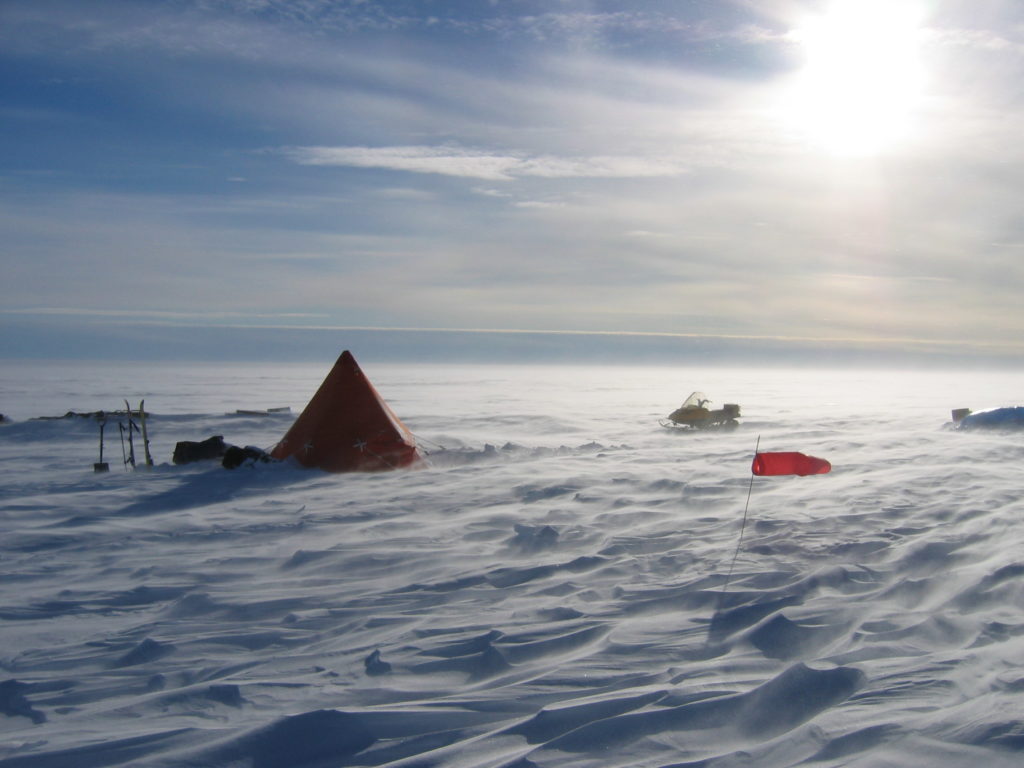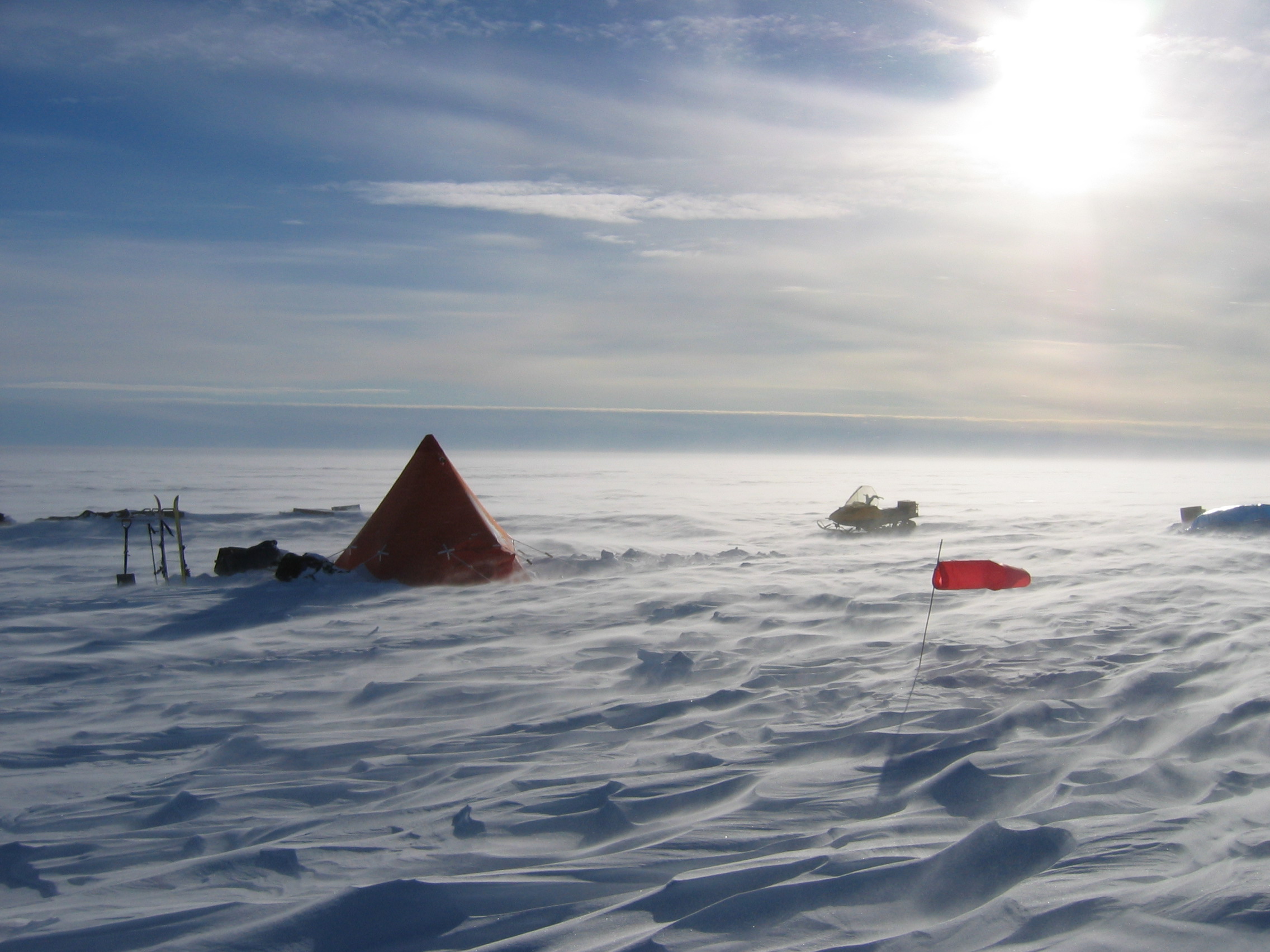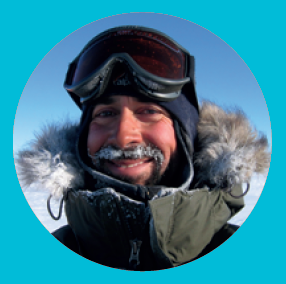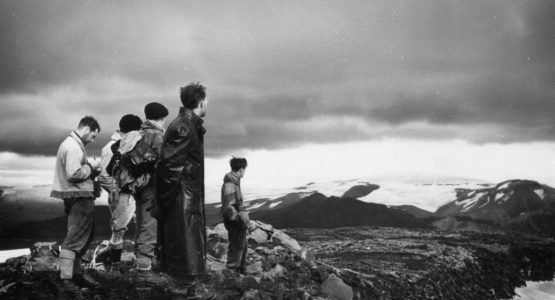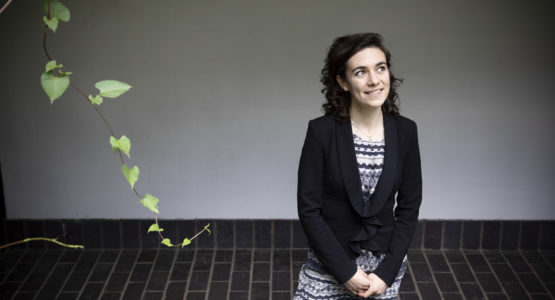Professor of Glaciology Pete Nienow (1984) received the Polar Medal in 2017 for his important contributions to scientific knowledge of the Polar regions. Delve into his insights on the radical changes in awareness of climate change and learn about the impact it has on glaciers and ice sheets.
Back in 1985, sitting in an uncomfortable lecture theatre on the Downing Site, during a lecture on climate, things all seemed so different. As undergraduate geographers considering processes controlling global climate, we listened intently to how the earth’s natural orbital cycles, as inferred by the brilliant Serbian geophysicist Milutin Milanković, controlled earth’s climate.
As we sat there, perhaps a little bleary eyed and in need of a tad more oxygen, the earth’s atmospheric CO2 concentration rose innocently past 340ppm (parts per million). No one sitting, standing or sleeping in that lecture theatre was concerned with potential issues associated with anthropogenically forced climate change; sunspot cycles yes, the ongoing slow retreat of the European glaciers from the cooler Little Age absolutely – but all of these changes we associated with natural planetary activity.
Now in January 2020 I am lecturing first year geography undergraduates at Edinburgh University. My opening slides contain some bleak statistics: the past five years have been the warmest globally over the past 140 years; 2019 marked the 43rd consecutive year that global land and ocean temperatures were at least nominally above the twentieth century average; and Greenland is losing ice seven times faster than it was in the 1990s. Meanwhile, as the clock approaches 10am, the global atmospheric CO2 concentration drifts past 413ppm.
In the 35 years since my first year undergraduate days at St John’s, the global atmospheric CO2 concentration has increased by almost as much as it would naturally between glacial (180–200ppm) and interglacial (280ppm) cycles – and the last glacial period, otherwise known as an ice age, peaked about 18,000 years ago.
I conclude the lecture with an apology that the scientific evidence I have offered up regarding recent trends and long-term projections for global temperatures, sea-level, Arctic sea-ice cover and Alpine glacier extent is so sobering. This doesn’t feel like a great way to start a course, and yet it cannot be ignored. In a world in the middle of a climate crisis
– arguably entering a new geological period, ‘the Anthropocene’ – it would be remiss not to highlight such issues and evidence in an introductory lecture to incoming geographers.

Those who know me will quickly confirm that I did not go in to glaciology because I thought it mattered. Instead, serendipity (or global misfortune) has resulted in my chosen area of research becoming so topical.
The glaciology courses taught by my brilliant PhD supervisor-to-be, Martin Sharp, most captured my attention as an undergraduate. This interest was stimulated further by a trip to Norway to support a Cambridge research team working on the Hardangerjøkulen ice cap. Rare sunny days on the snow and ice of the Jotunheimen mountains revealed the true beauty of glacial environments, but most days it rained relentlessly and I needed more persuasion to commit to research. Thankfully, a brief spell at Andersen Consulting in London provided that catalyst: by coffee break on day one, I realised that this line of work was not sustainable for me (something my long-suffering St John’s tutor and sage, Peter Linehan, of course already knew!). I took a week’s holiday to support Martin Sharp’s research group again, but this time we were in the stunning and, importantly, sunny Swiss Alps – and I was thus persuaded to try research, returning to St John’s to start my PhD in 1989.
We seem happy to give anyone a voice when it comes to climate science debates
I have spent the last 30 years trying to unravel the links between glacier hydrology and ice dynamics. In particular, I examine the extent to which the changes in water pressure in the drainage system at the glacier-bed interface impact rates of glacier sliding and thus ice flow. When I started the work, the research impetus was primarily of esoteric glaciological concern; what controls glacier flow rates and how do these impact glacier erosion and landscape evolution?
My first proposal that specifically focused on the links between glacier dynamics and climate change associated with greenhouse emissions was not submitted until 1988. From this time onwards, all of my work has had a climate focus.
My research has allowed me to spend extended periods in the Canadian Arctic and Greenland, looking at the contribution of these ice masses to sea level. Meanwhile my work in the Alps, Andes and Himalayas is more concerned with changes in downstream water resources in light of decreasing glacier volume. The importance of this work is broader than
Arctic research since more people are likely to be impacted in the short to medium term (20–50 years) by glacier retreat in high mountain regions than they are by sea-level rise.

In total I have lived for over three years under canvas in some of the world’s most stunning and, at times, hostile environments. Without a doubt, the most challenging fieldwork was spent at 2,000m elevation deep in the interior of the Greenland ice sheet calibrating and validating the European Space Agency’s CryoSat-2 satellite. This satellite, which is about the size of a small car, is currently orbiting the globe at 715km elevation, travelling at 7km/s and providing unprecedented evidence of global ice mass loss. However, when I was camped on the ice sheet for over a month with temperatures down to -37°C in an almost incessant katabatic wind, the long-term benefits of such work were easy to forget.
Glaciologists must continue to carry out the best science that we can, enhanced by ever advancing technologies, in order to improve our understanding of the processes driving ice mass loss and future projections.
We must also strive to engage more effectively with the media and improve objective reporting of climate issues. Not least, we must try to ensure that the media do not give inappropriate platforms to non-expert climate sceptics such as former Chancellor Nigel Lawson. Climate scientists and brain surgeons are not asked for their expert opinions on economic policy, yet we seem happy to give anyone a voice when it comes to climate science debates.
I encourage Johnians to take this climate crisis seriously and to think honestly about each individual action. We likely won’t suffer the serious consequences of climate change but future generations will.
Written by
Pete is Professor of Glaciology in Edinburgh. In the time between Pete sitting in geography lectures at St John’s and him lecturing geography students at Edinburgh, the earth’s CO2 concentration has risen dramatically and ice sheets have retreated at an alarming rate.
